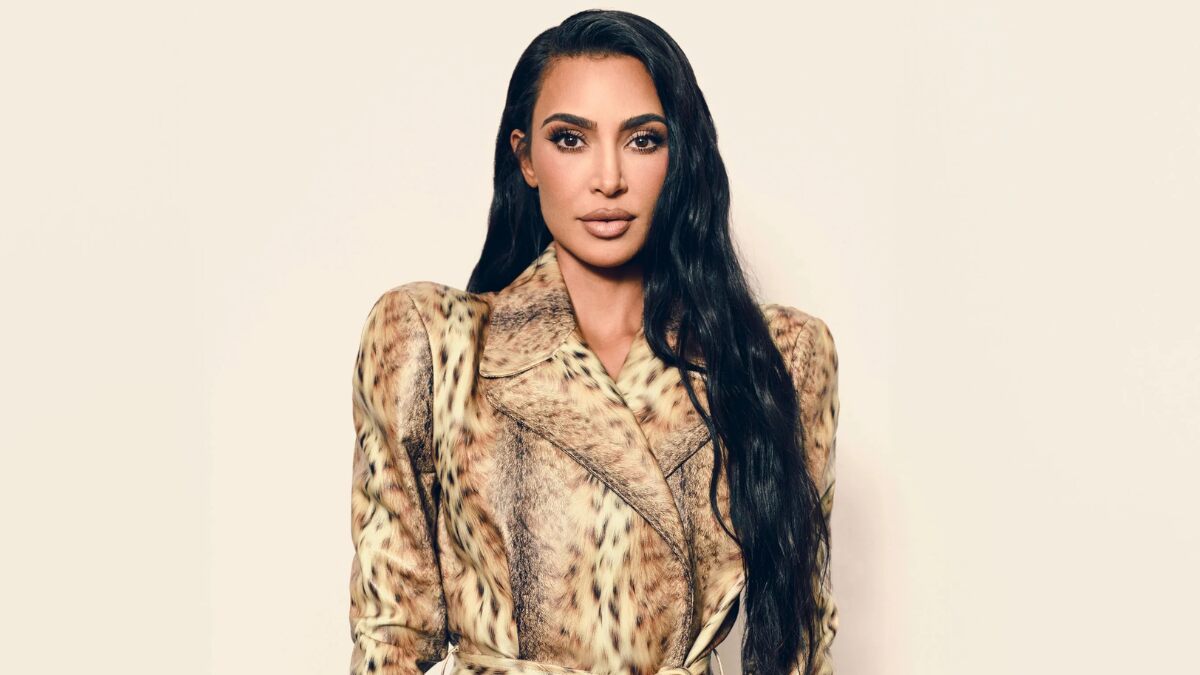To call Kim Kardashian “just a reality star” is to miss the entire scope of a modern cultural phenomenon. Her story began in the glow of early 2000s celebrity culture, propelled into public consciousness through Keeping Up With the Kardashians. Yet, where many would have faded when the cameras stopped rolling, Kim rewrote the script—transforming herself into a billionaire business mogul, global brand architect, and unexpected voice in justice reform.
This is not simply a Kim Kardashian biography—it’s a study in strategic reinvention. In an era when fame can be fleeting and public opinion fickle, she built a business portfolio that spans fashion, beauty, shapewear, and digital platforms, each one reflecting her uncanny ability to anticipate—and shape—consumer desire. Along the way, she evolved into a cultural icon, influencing everything from social media marketing to beauty standards across continents.
But how did she do it? What mix of timing, ambition, and calculated risk turned a tabloid fixture into one of the most powerful women in business? And what does her journey reveal about the evolving relationship between fame, media, and entrepreneurship in the 21st century?
Her legacy is still in motion, but one thing is clear: Kim Kardashian is no longer just keeping up—she’s leading.
The Reality TV Launchpad That Changed Fame Forever
Keeping Up with the Kardashians – The Genesis
When Keeping Up with the Kardashians premiered on the E! network in 2007, few predicted it would become a cornerstone in reality TV history—let alone the launchpad for a billion-dollar empire. At first glance, it was another glossy family docu-series, following the daily antics of Kris Jenner, her children, and their partners. But behind the laughs and drama was a calculated blueprint for celebrity branding beginnings in the social media era.
Kris Jenner, often dubbed the “momager,” understood that audiences didn’t just want to watch celebrities—they wanted to feel like insiders. The show blurred the lines between scripted entertainment and authentic family life, collapsing the traditional barrier between star and fan. Viewers were invited into arguments, reconciliations, business ventures, and even hospital rooms, creating a parasocial intimacy that traditional Hollywood publicity machines could never replicate.
Skeptics dismissed it as a fad, a shiny artifact of mid-2000s pop culture. But the Kardashians recognized early that attention is a form of currency—and that controlling the narrative was as valuable as any product line. In doing so, they didn’t just keep up with the changing media landscape; they helped rewrite the rules of modern fame.
The Power of Public Persona
From the start, Kim Kardashian understood that fame wasn’t just about being seen—it was about shaping the story behind the image. In the late 2000s, her name was a constant fixture in tabloids, often tied to sensational headlines. Yet instead of retreating from the spotlight, she leaned into the media narrative, reframing moments of scandal as stepping stones for personal brand evolution.
Her approach was a study in balance. She offered glimpses of vulnerability—family struggles, romantic ups and downs—while maintaining strict control over what was ultimately shared. This mix of openness and curation made her both relatable and aspirational, drawing audiences closer while keeping them wanting more.
Through calculated appearances, social media strategies, and entrepreneurial moves, Kim mastered celebrity self-marketing. Every outfit, Instagram post, and business venture became part of a larger brand story, one that evolved in real time with her audience. Rather than allowing public perception to dictate her trajectory, she became the architect of her image, proving that in the digital era, control over one’s narrative is as valuable as any product or endorsement.
The Pivot to Personal Branding & Digital Domination
Mastering Social Media Before It Was Cool
Long before “content creator” and “influencer marketing” became industry buzzwords, Kim Kardashian was quietly rewriting the playbook for celebrity social media strategy. When Instagram and Twitter were still seen as casual sharing tools, she recognized their potential as direct-to-fan channels—unfiltered, immediate, and free from the gatekeeping of traditional press.
Kim’s feed was a curated blend of glamour shots, behind-the-scenes family moments, and sneak peeks at new projects. She was among the first celebrities to master the art of turning a single post into a cultural moment, whether it was a red-carpet look that sparked trending hashtags or a teaser photo that doubled as digital brand building for upcoming products.
Her early brand collaborations—ranging from luxury labels to lifestyle products—were seamlessly woven into her content, making ads feel like part of her narrative rather than interruptions. In doing so, she didn’t just adapt to social media; she helped shape the influencer economy itself, proving that the power to reach millions could be as potent as any primetime TV slot.
Controlling the Narrative
For years, Kim Kardashian was a subject the media dissected at will—her image shaped by paparazzi photos, gossip blogs, and TV soundbites. But as her fame grew, she realized the most valuable platform was the one she could own outright. This shift marked a turning point: from media subject to media publisher.
Through celebrity-owned platforms like her personal app and subscription-based website, Kim created a space where she could share curated content directly with fans—exclusive photos, behind-the-scenes videos, style tips—without editorial filters. Her hit mobile game, Kim Kardashian: Hollywood, went beyond mere entertainment, functioning as an interactive extension of her brand and an innovative fan engagement strategy.
By controlling the medium, she also controlled the message. Product launches, personal milestones, and brand announcements came from her channels first, allowing her to bypass traditional PR cycles. This wasn’t just social media presence—it was strategic content ownership. In taking the reins, Kim didn’t simply react to public narratives; she set them, building a social media empire where she dictated the storyline and monetized the audience’s attention on her terms.
Building an Empire: Skims, KKW Beauty, and Beyond
Skims: Reinventing Shapewear
When Kim Kardashian launched Skims in 2019, it wasn’t pitched as just another shapewear label—it was positioned as an inclusive fashion brand that redefined the category. From the start, Skims broke with the industry’s narrow standards, offering an extensive range of skin tones, body types, and sizes. This wasn’t only shapewear innovation; it was a brand ethos built on accessibility and modern aesthetics.
Kim leveraged her deep understanding of direct-to-consumer fashion, bypassing traditional retail in favor of online-first drops and limited-edition runs that created urgency. Viral campaigns featuring a diverse lineup of models—and Kim herself—turned product launches into social media events, amplified by her personal platforms’ massive reach.
By merging style, comfort, and inclusivity, Skims became more than a product—it became a cultural statement, proving that even in a crowded market, thoughtful positioning and authentic representation can disrupt an entire industry.
KKW Beauty & Fragrance: The Aesthetic Empire
Launched in 2017, KKW Beauty arrived during the height of the celebrity beauty brand boom—but Kim Kardashian carved out her lane in the crowded market. Rooted in her signature neutral glam aesthetic, the brand stood out through sleek, minimalist packaging and tightly curated product drops that felt like events rather than mere launches.
Her fragrances, often inspired by personal milestones or thematic concepts, were housed in sculptural bottles that doubled as collector’s items. Strategic collaborations—including limited-edition collections with family members—deepened consumer connection and amplified reach.
By blending makeup entrepreneurship with her unmatched social media influence, Kim created a beauty empire that mirrored her brand: polished, trend-conscious, and instantly recognizable. KKW Beauty didn’t just sell products—it sold a piece of Kim’s image, solidifying her position as a leading example of celebrity beauty brand success in the modern era.
Strategic Partnerships & Licensing
Kim Kardashian’s business empire isn’t built solely on her brands—it’s amplified by carefully chosen brand collaborations and licensing deals. Her partnership with Yeezy, for example, extended her influence into high-fashion streetwear, while collaborations with luxury beauty and lifestyle brands positioned her alongside industry leaders.
What sets her apart is her selectivity. Kim rarely aligns with a product or company unless it complements her brand image and offers long-term value. These luxury partnerships are less about quick cash grabs and more about elevating her cultural capital.
Her co-branding strategies often merge her aesthetic with the partner’s strengths, resulting in campaigns that feel organic rather than transactional. By treating collaborations as an extension of her narrative, Kim ensures that every deal reinforces her identity as both a trendsetter and a savvy entrepreneur, keeping her brand ecosystem consistent and aspirational.
Cultural Influence and Social Capital
Kim Kardashian’s reach extends far beyond revenue streams—her true influence lies in shaping the way we see beauty, fashion, and celebrity itself. As a central figure in celebrity cultural influence, she helped redefine beauty standards in the 21st century, normalizing curvier body types in mainstream media and sparking broader conversations about body positivity and self-image.
Her aesthetic—glossy hair, contoured makeup, neutral palettes—set the tone for an entire generation of beauty trends, amplified by millions of Instagram posts and TikTok recreations. What once appeared in her selfies often filtered down to mass-market cosmetics aisles within months, underscoring her role as a style bellwether.
In fashion, Kim’s ability to move seamlessly between luxury couture and streetwear blurred old boundaries, influencing fashion cycles and accelerating the rise of high-low dressing. Brands began marketing not just seasonal collections but constant drops—mirroring the pace and visual style of her social media content.
Even marketing norms shifted under her influence. Kim demonstrated that a single Instagram post, if crafted with the right aesthetic and timing, could rival the reach of traditional advertising campaigns. Her direct-to-audience approach redefined celebrity endorsement from scripted commercials to authentic-seeming digital moments.
In this way, Kim Kardashian’s legacy is not only about the businesses she built but also about the cultural lens she helped shape—one where image, influence, and commerce are inseparably intertwined.
Law, Justice Reform, and Philanthropy
In one of the most unexpected pivots of her career, Kim Kardashian shifted from reality star and entrepreneur to an active force in celebrity activism. Her journey into law and prison reform advocacy began in 2018, when she successfully lobbied the White House for the release of Alice Marie Johnson, a nonviolent drug offender serving a life sentence.

Far from a one-off headline, the case ignited a deeper commitment. Kim began a four-year legal apprenticeship with a San Francisco law firm, working toward becoming a licensed attorney. Her studies run parallel to ongoing work with justice reform organizations, where she funds legal teams and campaigns to address sentencing reform and prison overcrowding.
Legal experts, including Johnson’s attorneys, have noted that Kim’s public platform draws unprecedented attention to overlooked cases, accelerating outcomes that might otherwise languish in the system. By blending fame with focused advocacy, she has reframed the possibilities of modern celebrity influence—showing that a carefully built platform can serve not just profit, but purpose.
Kim Kardashian Among the Titans of Modern Celebrity Entrepreneurs
The Peer Group
In any celebrity entrepreneur comparison, Kim Kardashian’s path stands apart from peers like Rihanna, Gwyneth Paltrow, and Jessica Alba. While Rihanna’s Fenty empire centers on bold inclusivity in beauty and fashion, and Paltrow’s Goop targets the wellness-luxury niche, Kim’s portfolio blends business model analysis rooted in accessibility, aspirational aesthetics, and high social media visibility.
Jessica Alba’s The Honest Company, for instance, is built on clean, family-focused consumer goods—a far cry from Kim’s image-driven, trend-responsive approach. Kim’s brands thrive on rapid cultural alignment, frequent product drops, and the amplification power of her platforms, allowing her to shift from beauty to fashion to digital ventures without diluting her core identity.
Her trajectory illustrates a hybrid strategy: part influencer marketing powerhouse, part traditional brand architect. In the crowded field of celebrity-led businesses, Kim’s success lies in her ability to adapt faster than trends change—turning her into a moving target that competitors struggle to match.
Different Roads to Billionaire Status
While Kim Kardashian, Rihanna, and other celebrity entrepreneurs share the billionaire (or near-billionaire) label, their paths reflect distinct strategies. Kim leveraged her reality TV fame into a diversified portfolio spanning shapewear, beauty, mobile apps, and licensing deals. Rihanna’s fortune is anchored in Fenty Beauty and Savage X Fenty’s market dominance, while Gwyneth Paltrow’s Goop thrives in the wellness and lifestyle luxury niche. Jessica Alba’s The Honest Company, though publicly traded, focuses on eco-conscious family products.
Each tapped into unique revenue streams, with varying degrees of diversification and media leverage. Kim’s edge lies in her constant cultural presence and ability to pivot across industries without losing relevance.
| Celebrity | Core Brands | Primary Revenue Streams | Media Leverage Style |
| Kim Kardashian | Skims, KKW Beauty | Fashion, beauty, licensing, apps | Reality TV + social media |
| Rihanna | Fenty, Savage X Fenty | Beauty, lingerie | Music + brand campaigns |
| Gwyneth Paltrow | Goop | Wellness, lifestyle | Editorial content |
| Jessica Alba | The Honest Company | Consumer goods | Family-focused branding |
Watching Kim’s Evolution Up Close
I still remember the night Keeping Up With the Kardashians first aired. It felt like light entertainment—part family chaos, part glossy escapism—and if you’d told me then that Kim would one day be a billionaire business mogul, I would have laughed. Back then, I saw her as a celebrity famous for being famous, a curious fixture in the growing reality TV landscape.
But over the years, my skepticism gave way to surprise. I watched as she navigated public scrutiny with a kind of resilience that was easy to underestimate. Each new venture—whether a beauty line, a mobile game, or a shapewear brand—seemed more strategic than the last. And when she stepped into prison reform advocacy, I realized I was witnessing a rare kind of evolution in real time.
Kim didn’t just grow her businesses; she grew her credibility. The same woman I once associated with red carpets and tabloid covers now commands boardrooms and law conferences. Following her journey has been a lesson in reinvention—and a reminder that first impressions can be wildly misleading.
The Legacy in Motion: What Kim Kardashian Teaches About Modern Influence
Kim Kardashian’s story is more than a celebrity success tale—it’s a masterclass in personal brand strategy for the digital age. She’s shown that the most powerful brands are built on adaptability, consistent storytelling, and the courage to pivot when the moment demands it. From reality TV to billion-dollar product lines, from beauty campaigns to modern entrepreneurship lessons in law and activism, her career underscores the value of evolving without abandoning your core identity.
Her trajectory also reveals the importance of cultural capital as a business asset. Kim’s ability to influence beauty trends, marketing norms, and even political conversations has kept her relevant in an environment where attention is the most fleeting commodity.
In a world where anyone can be famous for fifteen seconds, Kim has stretched hers into a decades-long influence—by treating every platform, product, and partnership as part of a bigger, intentional narrative. The takeaway is clear: in modern business, it’s not just about keeping up—it’s about staying ahead, setting the pace, and knowing exactly when to rewrite your own story.
Mohit Wagh is the co-founder of The Graval with over 10 years of experience in SEO and content strategy. He specializes in crafting data-driven, authoritative content that blends cultural insight with digital growth.





6 thoughts on “The Legacy of Kim Kardashian: From Reality TV Star to Billionaire Business Mogul”